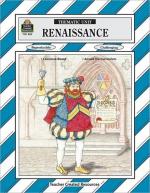|
This section contains 1,934 words (approx. 7 pages at 300 words per page) |

|
Types of Towns. The economic division of labor between town and countryside meant that towns were different entities from villages, even when they were sometimes almost the same size as a village. It makes sense to think of two distinct types of towns during the Renaissance and Reformation. The vast majority of towns functioned as regional market centers for the surrounding villages. They might range in size of up to perhaps ten thousand inhabitants, though most had fewer than five thousand. They were large enough to have a variety of trades among their citizens, but small enough that everyone who lived there knew his or her neighbors. Conversely, the few larger towns were dedicated primarily to fostering long-distance trade and making products available to a small stratum of wealthy people. They were too large for there to be a...
|
This section contains 1,934 words (approx. 7 pages at 300 words per page) |

|




